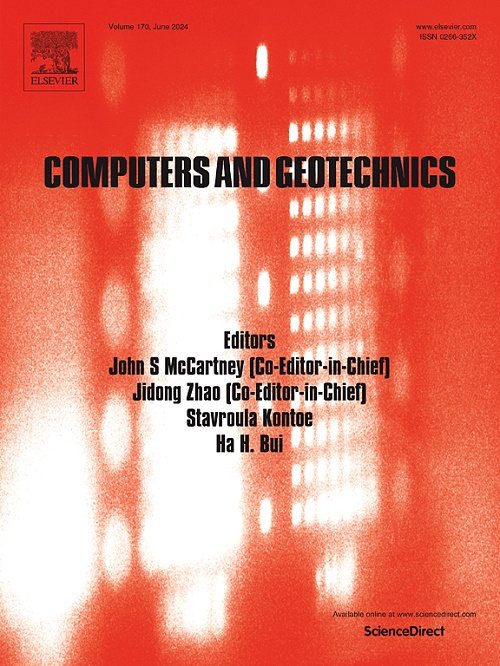A Comprehensive Investigation of Physics-Informed Learning in Forward and Inverse Analysis of Elastic and Elastoplastic Footing
IF 5.3
1区 工程技术
Q1 COMPUTER SCIENCE, INTERDISCIPLINARY APPLICATIONS
引用次数: 0
Abstract
Physics-informed learning has emerged as a promising approach for solving forward and inverse partial differential equations in engineering practice, but selecting an optimal loss function remains unclear and parameter identification for inverse analysis lacks efficiency. Meanwhile, their values for engineering-scale elastoplastic problems have not been deeply investigated. In this research, a comprehensive comparison between the strong-form collocation point method (CPM) and the deep Ritz method (DRM) based loss functions for both forward and inverse analysis is conducted, and a novel exponential acceleration method is proposed to enlarge the search space of unknown parameters for inverse analysis. By applying these methods to linear elasticity and elastoplasticity footing cases, we found that physics-informed learning equipped with DRM-based loss functions shows more excellent accuracy in forwardly computing displacement but poor accuracy in predicting strain and stress. Physics-informed learning with CPM-based loss functions shows more excellent performance in inverse analysis than their forward-solving ability. The exponential acceleration method largely enhances the efficiency of inverse analysis without sacrificing accuracy. These new findings inspire the future application of physics-informed learning to engineering-scale elastoplastic problems.
求助全文
约1分钟内获得全文
求助全文
来源期刊

Computers and Geotechnics
地学-地球科学综合
CiteScore
9.10
自引率
15.10%
发文量
438
审稿时长
45 days
期刊介绍:
The use of computers is firmly established in geotechnical engineering and continues to grow rapidly in both engineering practice and academe. The development of advanced numerical techniques and constitutive modeling, in conjunction with rapid developments in computer hardware, enables problems to be tackled that were unthinkable even a few years ago. Computers and Geotechnics provides an up-to-date reference for engineers and researchers engaged in computer aided analysis and research in geotechnical engineering. The journal is intended for an expeditious dissemination of advanced computer applications across a broad range of geotechnical topics. Contributions on advances in numerical algorithms, computer implementation of new constitutive models and probabilistic methods are especially encouraged.
 求助内容:
求助内容: 应助结果提醒方式:
应助结果提醒方式:


